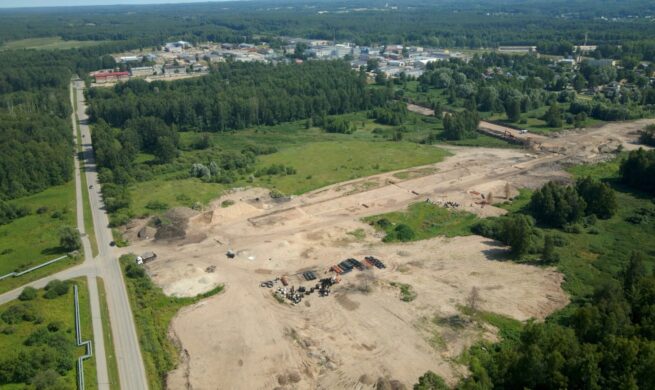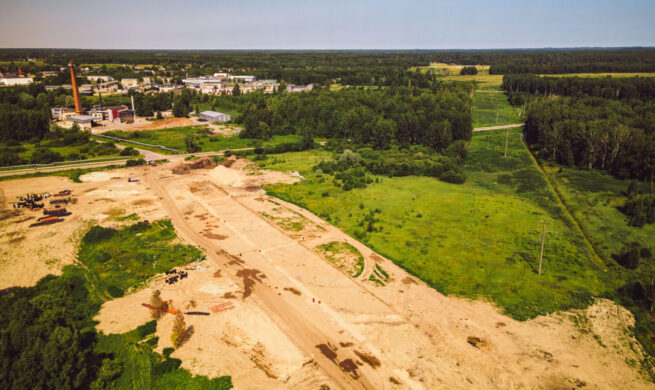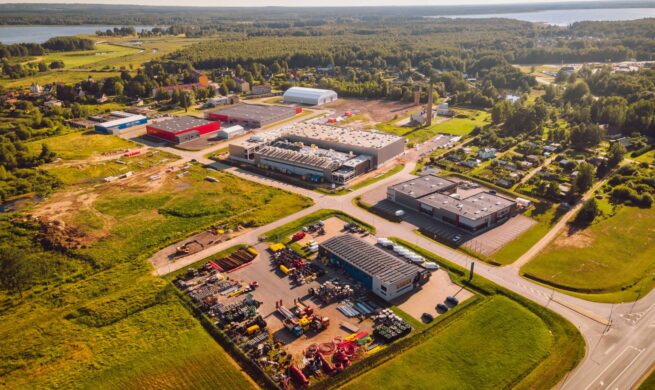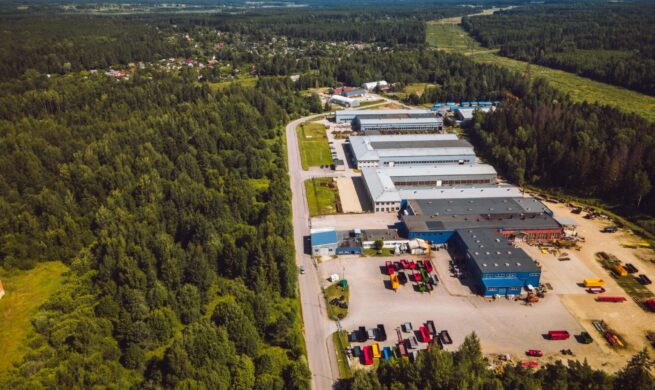Raul Kalev, Võru County Development Centre Foundation
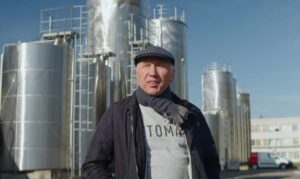
Many of us have admired the Great Taevaskoda and the ancient valley of the Ahja River, but few know that the people living in the middle of this breathtaking natural wonder are some of the most resourceful in Estonia. Alongside many new and smaller companies, whether they are wine- making or dairy plants, the Põlva dairy industry stands proud as a monument to diligence and ingenuity. The company, which was famous throughout the Soviet Union in the 1970s and 1980s due to its innovative spirit, is now at least as active in modern innovation: reducing its ecological footprint.
When I first came into contact with people from Põlva County as a young journalist in the 1990s, these meetings had been with extremely enterprising large company founders who had attended school in Põlva, but later moved to the capital. At that time, there was even the phrase ‘Põlva mafia’ in circulation in the economic circles of our country, which was used to describe a whole generation of successful people in the fields of industry, banking and production. They were thought to have achieved such success because of their resourcefulness and support for each other. According to folklore, the entrepreneurship and ingenuity stemmed from the Seto blood.
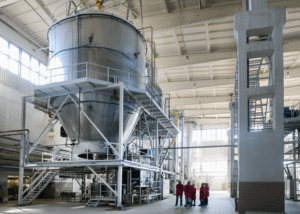
Modern times, old customs
And perhaps there was a grain of truth in the folklore. The Põlva dairy plant, which was opened at the end of the 1960s, became the flagship for industrial development in the county and indeed the whole country at that time, which, as a result of its own success, led to the development of the entire town and its surrounding areas. The contribution of the young director Tiit Kõuhkna is especially remembered, along with the incredible ruble deposits he managed to bargain from Moscow on the basis of so-called rationalisation proposals. This attracted the envy of many leaders of Estonian cities much larger than Põlva. If I remember correctly, the production of curd in the cheese category also started in Põlva. The reason for this was to increase sales under the restrictive quotas. Cottage cheese is still one of the greatest production successes there.
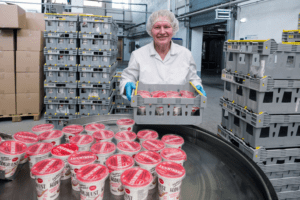
Although times have changed, the powder towers of the Põlva dairy industry still stand tall not far from the town. Even today, 250,000 kg of milk per day is stored here. Milk trucks start their rounds at 3 o’clock in the morning, the factory working non-stop in several shifts. Every day, more than 150 people come to work here. And the workers do not only come from Põlva, but also from further afield. Some of the workers are even from the Pskov region in Russia.
Around here, a daily 100-kilometre ride to work is no exception. The main thing is to ensure a pleasant and stable job and a steady income.
Loyal employees are the cornerstones of the company
Today Põlva dairy industry has been part of the Tere Group for 13 years. Its official name is now Nordic Milk. While milk powder production is still the main production direction, whole milk products have also been further developed alongside it. The former Mumuu brand no longer exists, and the products are now well-integrated into the Tere brand.
Ülo Kivine, Chairman of the Management Board of Nordic Milk, says that he is especially satisfied with the commitment of the employees of southeast Estonia. The number of people leaving the company at their own request has remained around 1% in recent years. In our capital Tallinn, this would be unheard of! A lot of people have been working for the company for several decades. It is no wonder, because in addition to the above-average salary in the region, they also receive various benefits from the company. Jubilee benefit related to seniority. Childbirth benefit. School satchel benefit. Child camp benefit. Benefit in case of the loss of a close one. Sports and eyewear benefit. In addition to the annual summer holiday, employees also receive a winter holiday. Seniority will also provide additional days off. On birthdays, the contributions of employees are recognised with gifts. Learning is supported (cooperation with Olustvere School of Service and Rural Economics). The aim is to ensure the existence of adequate offspring.
Doesn’t reading this just make you want to send your resume to Põlva?
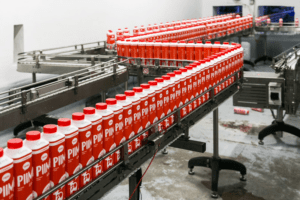
Production is sold to 25 countries
Ülo Kivine admits that milk storage volumes have increased in recent years and milk yields on farms are also growing. Although only one of the company´s three powder towers currently operates, this is only due to current world market prices. However, as powder prices have risen again by 70% in the last year, it is planned to increase stockpiling and production soon.
Various dairy products from Põlva industry find their way to 25 foreign countries. The powder is sold all over the world. Even to such far-off countries as Japan and Vietnam. Yoghurts and other whole milk products are mainly exported to Finland and the Baltics. In order to increase the volume of value-added production, 100% handmade cottage cheeses have been made in Põlva industry for some time now, with real Setomaa mushrooms inside. These products offer great competition to the production of another local and popular small dairy producer, Nopri.
The local authorities of Põlva County know how to maintain companies as well as help them thrive. The concerns of every investor and employer are important to them. ‘We have enjoyed exceptionally pleasant cooperation with the last Põlva rural municipality authority,’ says Kivine. ‘They have been very understanding and accommodating. When the main bridge was being repaired in the summer and cars were diverted from the town, we were made an exception so that our 20 milk trucks would not have to make big loops around the town each day.’
The dairy industry is reducing its ecological footprint
In recent years, a vigorous green transition has begun in the Põlva region. The Nordic Milk Põlva dairy industry has also joined the movement. ‘Estonia chief export in the world can still only be clean air and clean food, which is becoming less and less everywhere,’ says Kivine, a note of pride softening is voice. ‘We are the founders of the Green Tiger in Estonia, actively measuring and reducing our footprint.’
In order to export to certain markets, the existence of a green certificate will soon become critical for all food producers. It is towards this certificate that people are moving in Põlva. This means that the ecological footprint must be reduced on farms, in packaging and even in the jams put inside the yoghurt. There are no exceptions. For an average person, it is difficult to even imagine all the things that have to be traced for the ecological footprint. ‘We have already made smaller plastic caps for milk packages, abandoned the foil packaging in curds and switched from the “use by” date to the “best before” label to prevent waste,’ Kivine lists the instances of reduced footprints he remembers first.
Needless to say, the Nordic Milk Group continues to invest in the Põlva dairy industry in southeast Estonia. Every year, some of the equipment is replaced with newer and more efficient models. Recently, the first packing robot was procured. Every year, the industry invests around 3–4 million euros.
The whole county has been affected by the green revolution
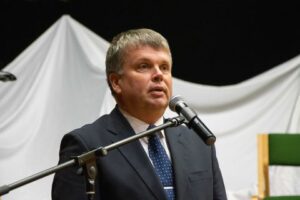
Lennar Liba, head of the Põlva County Development Centre, confirms that in reality the Põlva dairy industry is only one alongside many of the best in the region. Räpina Paper Mill, Arcwood and several other smaller companies are almost as diligent in monitoring and minimising their footprint. Some do it more consciously, some instinctively.
In reality, the green transition, ecological footprint reduction and the circular economy are the leading ideas of the whole county. These areas are so important that in the near future it is planned to hire a full-time specialist who will be focused solely on issues of the green and circular economy. Such a position does not yet exist even in the Ministry of the Economy located in our capital. Põlva County motto ‘Greener life’ also does not provide an opportunity to doubt the earnestness of the intentions.
Hope for increased funding
But there is another plus to all of this. Perhaps even the biggest. Namely, supporting the green economy is one of the top priorities of the European Structural Funds. And with the help of these subsidies, the smart leaders of southeast Estonia want to develop their county to a whole new level. It seems their next trick of the trade is to be one step ahead of others and reap more benefits. Benefits that affect the whole region and its inhabitants.
Establishing telework centres alongside large industries
According to Lennart Liba, head of the Põlva County Development Centre, southeast Estonia does not have the space to welcome new large food and wood companies. This is even somewhat feared, as they would start competing for workers of existing large companies in the face of intense competition. This is something to be avoided. Local businesses are cared for.
Instead, the future is seen in new types of green smaller manufacturing plants and telework centers.
Incentive state support
Why bring your company to southeast Estonia? Why establish your start-up in Põlva, Valga or Võru?
The reasons are, among other things, the state money distributed here. In addition to the state support specifically intended for southeast Estonia to promote innovation and the creation of more diverse job opportunities, with respective application rounds renewed every year, Kaido Palu, head of the Võrumaa Development Centre´s business area, mentions another particularly topical and useful support measure. It is the housing support measure for specialists in southeast Estonia. It is paid once a year by municipalities to professionals that are highly valuable to companies, with the aim that professionals can move to the area, acquire a home and renovate it. The support measure in the amount of 10,000 euros is so popular that the entire amount is usually distributed within a few days.
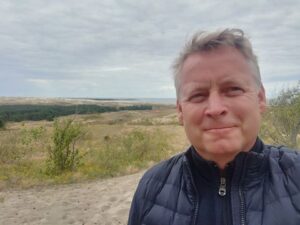
‘Our region is characterised by excellent cooperation between entrepreneurs and the public sector,’ says Palu. ‘Entrepreneurs are good partners rather than competitors.’ According to Palu, this means that entrepreneurs come to the aid of each other as soon as someone has a problem finding a technique, device or a specialist. ‘Local governments are definitely making an effort, however they can, to speed up conducting business with entrepreneurs,’ he adds.
And, of course, the development centres are of great help. They help food, timber and tourism companies in terms of both joint marketing and knowledge transfer.
Estonia´s best residential and business area in 2030?
‘Here in southeast Estonia, we have everything that can only be dreamed of in many regions of the world,’ Lennart Liba, head of the Põlva County Development Centre, also believes. ‘We are not affected by stormy winds, a scorching sun or floods. Instead, it is peaceful and safe here, with clean nature and the necessary infrastructure for raising children. If anybody does get bored, they can always drive to Tartu, which is just half an hour away.’
And the distance to Riga is the same as it is to Tallinn.
Lennart Liba sighs when he thinks about one of the last big problems waiting to be solved. Once the solution arrives, many companies could relocate here as soon as the following day.
‘We are of the opinion that the 65 million euros planned by the state is not enough to build the Internet in rural areas – for this, it is necessary to take a loan of 200 million euros,’ says Liba. ‘Otherwise, in a few years’ time, we will be far behind in competition with other countries.’
Liba believes that if digitalisation, i.e. bringing the data communication infrastructure to the world level, succeeds, companies from all over the world could be managed on-site in Räpina or Mooste. On the other hand, the Germans and the British could control the complex technological processes of the local farms or timber industries by means of computers.
‘Then there may not be a better place for an ingenious person to live and do business development than in southeast Estonia,’ he notes.
The publication of the article is financed by funds from the Southeast Estonia Programme
Other significant production investments in southeast Estonia in recent years:
• UPM-Kymmene (40 million euros). Plywood production.
• Toftan (32 million euros). Sawn timber production.
• Peetri Puit (9.4 million euros). Manufacture of laminated timber constructions.
• Rauameister (3 million euros). Manufacture of metal structures.
• Atria Eesti (8.9 million euros). Food industry.
